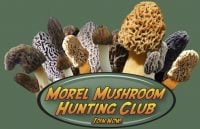Lobster Mushrooms (Hypomyces lactifluorum)

- Photos
- Videos
- Description
- Habitat
- Edibility
- Similar Species
- Preserving (Drying or Freezing)
- Recipe Suggestions
- References
Join The Club Now!
Photos:
Color Change of older specimen:
Recent 2019 Finds/Reports:
Original Gallery:
Commercially Harvested:
Videos:
Description:
The Lobster mushroom, Hypomyces lactifluorum, contrary to its common name, is not a mushroom, but rather a parasitic ascomycete fungus that grows on certain species of mushrooms, turning them a reddish orange color that resembles the outer shell of a cooked lobster. H. lactifluorum specifically attacks members of the genera Lactarius and Lactifluus (milk-caps), and Russula (brittlegills), such as Russula brevipes and Lactifluus piperatus in North America. At maturity, H. lactifluorum thoroughly covers its host, rendering it unidentifiable.
Lobster mushrooms are widely eaten and enjoyed; they are commercially marketed and are commonly found in some large grocery stores. They have a seafood-like flavor and a firm, dense texture. In the Lobster mushroom’s scientific name, hypomyces is a Greek word meaning “mushroom underneath” as a nod to the process by which the Lobster mushroom is formed. These brightly-colored orange mushrooms can also be used as a dye for wool, fabrics, and paper. When used as a dye with ammonia, it will create a pink-red color.
Habitat:
Lobster mushrooms can be found growing under hemlock trees and other conifers in North America, specifically in the Pacific Northwest and have been growing since ancient times. Today Lobster mushrooms can be found at farmers markets and specialty grocers in the United States, Canada, and in Europe.
Edibility:
Choice!
Lobster mushrooms are best suited for cooked applications such as sautéing and baking and hold their texture well after cooking. To clean, the mushrooms should be dry brushed instead of cleaned with a damp cloth because the bright color can be removed when wiped. Lobster mushrooms can be added to stuffing, baked in pasta dishes, mixed into broth and soups, cooked in cream-based sauces, and added to stews and terrines. They can also be incorporated into risotto, seafood stew, omelets, and stir-fries. Lobster mushrooms make a great dried mushroom as the drying process captures their rich flavor qualities and preserves them. Lobster mushrooms pair well with onions, garlic, ginger, new potatoes, orzo, spinach, broccoli, cauliflower, tomatoes, lemon, and cannellini beans. They will keep up to one week when stored in a paper bag in the refrigerator. Once cooked, it is important that the mushrooms be consumed within two days to avoid spoiling and food poisoning.

































































































